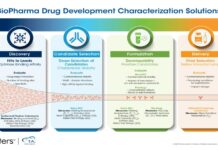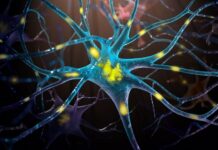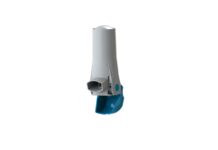A multicenter team of researchers, including scientists at Columbia University Medical Center (CUMC), Brigham and Women’s Hospital (BWH), Mount Sinai School of Medicine, and Massachusetts Institute of Technology, has developed biodegradable nanoparticles that are capable of delivering inflammation-resolving drugs to sites of tissue injury.
The nanoparticles, which were successfully tested in mice, have potential for the treatment of a wide array of diseases characterized by excessive inflammation, such as atherosclerosis.
The study was published in the online edition of the Proceedings of the National Academy of Sciences.
A key way in which the body protects itself against infection or injury is through acute inflammation. Ideally, this response first promotes the clearance of pathogens or damaged tissue; then, through a process called inflammation resolution, it clears cellular debris and inflammatory mediators and restores the tissue to its normal state. However, in many conditions, including heart disease, arthritis, and neurodegenerative diseases, the inflammatory process never resolves, leading to tissue damage.
“A variety of medications can be used to control inflammation. Such treatments, however, usually have significant side effects and dampen the positive aspects of the inflammatory response,” said co-senior author Ira Tabas, MD, PhD, the Richard J. Stock Professor, Department of Medicine, and professor of Pathology & Cell Biology (in Physiology and Cellular Biophysics) at CUMC. The other co-senior author is Omid Farokhzad, MD, Associate Professor of Anesthesiology and Director of Laboratory of Nanomedicine and Biomaterials at Brigham and Women’s Hospital (BWH).
To overcome these obstacles, the researchers incorporated two advances. First, based on an idea from co-lead author Gabrielle Fredman, PhD, a postdoctoral fellow at CUMC, they took advantage of a 24-amino-acid peptide, Ac2-26, which is derived from a naturally occurring protein mediator of inflammation resolution called annexin A1. Second, rather than simply inject the “naked” peptide into injured mice, they packaged the peptide into nanoparticles, designed by the BWH group, that are able to target drugs to sites of tissue injury. The nanoparticles were given this ability through the addition of two components: one that gives them stealthlike properties, enabling them to avoid detection and clearance by white blood cells and the liver; and a second that gives them the ability to target collagen IV, a protein found at sites of tissue injury.
Each nanoparticle is less than 100 nanometers in diameter, or 1/100,000th the diameter of a human hair.
The nanoparticles were tested in mice with peritonitis (inflammation of the peritoneum, the thin tissue that lines the inner wall of the abdomen) or hind-limb ischemia-reperfusion injury (tissue damage caused when blood supply returns to tissue after a period of ischemia, or lack of oxygen). In the mice with peritonitis, intravenous administration of the Ac2-26-containing nanoparticles was significantly more effective at limiting recruitment of neutrophils (a type of inflammatory white blood cell) and at increasing the resolution of inflammation than was intravenous administration of naked Ac2-26. In mice with reperfusion injury, the nanoparticles reduced tissue damage in comparison with either of two types of control nanoparticles: those with a peptide in which the 24 amino acids were scrambled to render it biologically inactive and Ac2-26 nanoparticles without the collagen IV-targeting component.
“These targeted polymeric nanoparticles are capable at very small doses of stopping neutrophils, the most abundant form of white blood cells, from infiltrating sites of disease or injury,” said co-lead author Nazila Kamaly, PhD, a postdoctoral fellow at BWH. “This action stops the neutrophils from secreting further signaling molecules that can lead to a constant hyper-inflammatory state and further disease complications.”
“The beauty of this approach is that, unlike many other anti-inflammatory approaches, it takes advantage of nature’s own design for preventing inflammation-induced damage, which does not compromise host defense and promotes tissue repair,” said Dr. Tabas.
While the nanoparticles do spread to tissues throughout the body, they tend to concentrate in areas of inflammation. “In theory, this should allow physicians to use smaller-than-usual doses of medications and reduce unwanted side effects,” said Dr. Fredman.
The team is currently designing nanoparticles for the treatment of atherosclerosis. Preliminary studies show that the nanoparticles are capable of targeting atherosclerotic plaques.
The authors have filed a patent for targeted polymeric inflammation-resolving nanoparticles to treat a variety of chronic inflammatory diseases, including atherosclerosis, autoimmune disease, type 2 diabetes, and Alzheimer’s disease.




















